
by Contributed | Mar 30, 2024 | Technology
This article is contributed. See the original author and article here.
Introduction
Exclusions in Azure WAF (Web Application Firewall) are a critical feature that allows administrators to fine-tune security rules by specifying elements that should not be evaluated by WAF rules. This capability is essential for reducing false positives and ensuring that legitimate traffic flows unimpeded. Exclusions are designed to fine-tune the WAF’s sensitivity, allowing legitimate traffic to pass through while maintaining robust security measures. They are particularly useful in scenarios where certain request attributes, such as specific cookie values or query strings, are known to be safe but might trigger WAF rules due to their content or structure.
Azure WAF Exclusions: A Closer Look
Azure WAF exclusions can be applied to a rule, set of rules, rule group, or globally for the entire ruleset. This flexibility is crucial for meeting application-specific requirements and reducing false positives. For instance, exclusions introduced with CRS 3.2 on regional WAF with Application Gateway now allow attribute exclusions definitions by name or value of header, cookies, and arguments.
Attributes for WAF exclusions
- Attributes that can be excluded include:
- Request headers
- Request cookies
- Query strings
- Post args
- JSON entity (only for AFD WAF)
- Operators for exclusions include:
- Equals: For exact matches.
- Starts with: Matches fields starting with a specific selector value.
- Ends with: Matches fields ending with a specified selector value.
- Contains: Matches fields containing a specific selector value.
- Equals any: Matches all request fields (useful when exact values are unknown).
Note: The “Equals Any” condition automatically converts any value you enter in the selector field to an asterisk (*) by the backend when creating an exclusion. This feature is especially valuable when handling unknown or random values.
- Exclusions can be applied on:
- Rule
- Rule set
- Rule group
- Global
Azure Front Door WAF: Exclusion Example
Azure Front Door WAF allows for exclusions to be set at a detailed level, targeting the values of match variables like request headers, cookies, and query strings. This granularity ensures that only the necessary parts of a request are excluded from rule evaluation, reducing the likelihood of false positives without significantly impacting the overall security posture.

When configuring Azure Web Application Firewall (WAF) to inspect JSON request bodies, it’s crucial to understand how to handle legitimate requests that might otherwise be flagged as potential threats. For instance, consider the following JSON request body:
JSON Example
{
“posts”: [
{
“eid”: 1,
“comment”: “”
},
{
“eid”: 2,
“comment”: “”1=1″”
}
]
}
In this example, the “1=1” in the comment field could be mistaken by the WAF as a SQL injection attempt. However, if this pattern is a normal part of your application’s operation, you can create an exclusion to prevent false positives. By setting an exclusion with a match variable of Request body JSON args name, an operator of Equals, and a selector of posts.comment, you instruct the WAF to overlook the “comment” property when scanning for threats. To refine the exclusion and make it more specific, we have applied it solely to the ‘SQLI’ rule group and the ‘942150 SQL Injection Attack’ rule. This ensures that only this particular selector is exempt from inspection by this rule, while all other rules will continue to inspect it for any threats.
Note: JSON request bodies inspection For Azure Front Door WAF is available from DRS 2.0 or newer.
Application Gateway WAF: Exclusion Example

For WAF on Application gateway we will use a different JSON example:
JSON Example
{
“properties”: {
“credentials”: {
“emai.l=l”: “admin”,
“password”: “test”
}
}
}
In the previous example, we examined the value of the selector. However, in this case, our focus is on excluding the selector key itself, rather than excluding the value within the key. Above in the JSON example you can see “properties.credentials.emai.l=l” and This specific key contains “l=l”, which could potentially trigger an SQL injection attack rule. To exclude this specific selector, we’ve created an exclusion rule matching the variable “Request Arg Keys” with the value “properties.credentials.emai.l=l”. This exclusion prevents further false positives.
This feature is available in Application Gateway WAF and only in CRS 3.2 or newer and Bot Manager 1.0 or newer. By excluding the key/selector itself, we significantly improve the tuning of WAF false positives. For more WAF Exclusion examples see here Web application firewall exclusion lists in Azure Application Gateway – Azure portal | Microsoft Learn
Furthermore, within Application Gateway WAF, you have the flexibility to selectively apply this exclusion to specific rules. In our scenario, we’ve opted to apply it to Rule 942130: SQL Injection Attack: SQL Tautology. This means that we’re excluding this particular key only for this specific rule, while still ensuring that the rest of the JSON is thoroughly inspected by the remaining ruleset
Note: Request attributes by names function similarly to request attributes by values and are included for backward compatibility with CRS 3.1 and earlier versions. However, we it’s recommended using request attributes by values instead of attributes by names. For instance, opt for RequestHeaderValues rather than RequestHeaderNames
This approach ensures that legitimate traffic is not inadvertently blocked, maintaining the flow of your application while still protecting against actual security risks. It’s a delicate balance between security and functionality, and exclusions are a powerful tool in the WAF’s arsenal to achieve this balance. Always verify the legitimacy of such patterns before creating exclusions to maintain the security posture of your application.
Match variable mapping.
When setting up exclusions, it can be challenging to map the Match variables you observe in your logs to the corresponding configuration on your Web Application Firewall (WAF). By referring to this table, you can streamline the exclusion process and ensure that your WAF is accurately tuned to your traffic.
Azure Application Gateway
MatchVars in Logs
|
MatchVars for Excl.
|
REQUEST_HEADERS_NAMES
|
Request Header Keys
|
REQUEST_HEADERS
|
Request Header Values/Names
|
REQUEST_COOKIES_NAMES
|
Request Cookie Keys
|
REQUEST_COOKIES
|
Request Cookie Values/Names
|
ARGS_NAMES
|
Request Arg Keys
|
ARGS
|
Request Arg Values/Names
|
ARGS_GET
|
Request Arg Values/Names
|
REQUEST_URI
|
Custom Rule
|
REQUEST_BODY
|
Request Arg Values/Names
|
REQUEST_BASENAME
|
Custom Rule (Part of URI)
|
MULTIPART_STRICT_ERROR
|
N/A
|
REQUEST_METHOD
|
N/A
|
REQUEST_PROTOCOL
|
N/A
|
Request_Filename
|
Custom
|
REQUEST_URI_RAW
|
Custom
|
XML
|
Custom
|
MULTIPART_STRICT_ERROR
|
N/A
|
Azure Front Door WAF
MatchVars in Logs
|
MatchVars for Excl.
|
HeaderValue
|
Request header name
|
CookieValue
|
Request cookie name
|
QueryParamValue
|
Query string args name
|
MultipartParamValue
|
Request body post args name
|
JsonValue
|
Request body JSON args name
|
URI
|
Custom Rule
|
InitialBodyContents*
|
Custom Rule
|
DecodedInitialBodyContents*
|
Custom Rule
|
Best Practices for Implementing Exclusions
When implementing exclusions, it’s crucial to follow a structured approach:
- Document Current Settings: Before making any changes, document all existing WAF settings, including rules and exclusions.
- Test in Staging: Apply and test exclusions in a non-production environment to ensure they work as intended without introducing new risks.
- Apply to Production: Once verified, apply the tested exclusions to the production environment, monitoring closely for any unexpected behavior.
Conclusion
Exclusions in Azure WAF, whether for Azure Front Door or Application Gateway, offer a nuanced approach to web application security. By understanding and utilizing these features, administrators can ensure that security measures are effective without disrupting legitimate user activity. As Azure WAF continues to evolve, the ability to fine-tune security through exclusions will remain a cornerstone of its effectiveness.
Resources
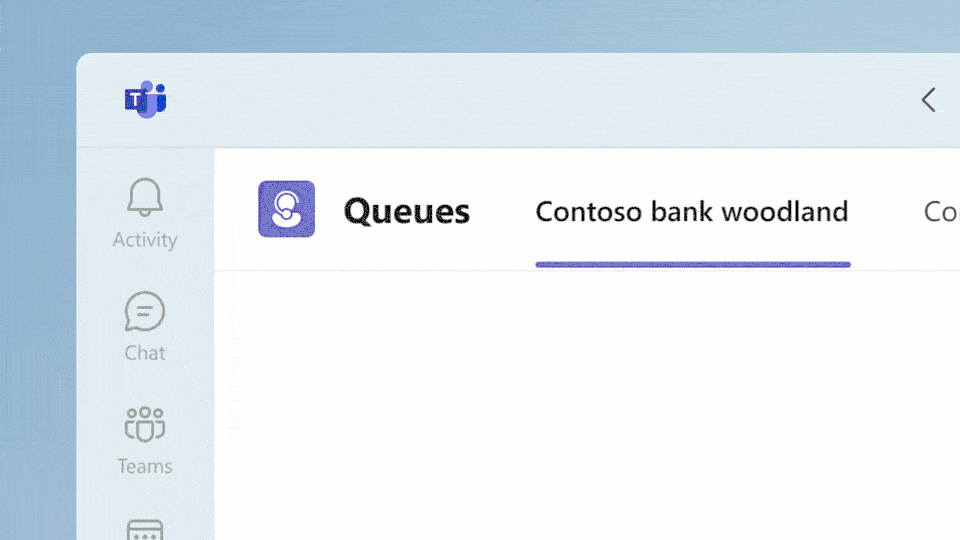
by Contributed | Mar 29, 2024 | Technology
This article is contributed. See the original author and article here.
By Brenna Robinson, General Manager, Microsoft SMB
At this year’s Enterprise Connect conference, Microsoft showcased new products and solutions improving business communications and collaboration. The Enterprise Connect conference features the latest unified communications (UC) trends, technologies and best practices to help you expand your business. We’d like to share some of the announcements we’ve made, including new ways to manage your phone calls in Microsoft Teams Phone with the new Queues app. We’ve also enhanced Microsoft Teams channels with the new discover feed, and we’ve added meet now to group chats.
Teams Phone and unified communications
Microsoft Teams Phone is a key addition for a small business already using Microsoft Teams because it’s the only cloud telephone solution natively built for Teams. A business can get the benefits of unified communications without many technical hassles or much extra expense.
UC puts all your communications medium under one roof, including things like voice, chat, collaboration, scheduling, presence management and more. Unifying these capabilities lets you save on costs and increase productivity because you can see all your communications inside a single interface rather than having to switch across multiple providers. It also greatly helps with external communications, like customer service for example, since it combines conversations from different channels into a single, productive exchange. Teams Phone is your shortest path to all those benefits because it’s purpose-built to easily integrate with Teams.
Queues app
Case in point is the new Queues application now in private preview. This new app improves call management for Teams Phone users by allowing individuals to better manage customer calls and for supervisors to manage incoming call queues. It also provides new call analytics. The app will be available in the Teams Store and can be pinned to the left rail of the Teams client.
The Queues app will be available as part of Teams Premium in Summer 2024 and requires a Teams Phone subscription. We are offering a limited number of pre-launch previews for interested customers. Share your interest by nominating your organization to participate.
 Queues app allows for better managment of customer calls.
Queues app allows for better managment of customer calls.
Private Line
We also want you to know that the Private line feature we announced last fall is now generally available. Private line allows you to identify and respond to priority callers, the people whose calls you want to receive immediately without wait times. Private line is like having a second, private line that is only accessible to hand-picked contacts. Your priority callers can call you directly and bypass delegates, admins, or assistants. Supporting incoming calls only, Private line calls will be distinguished by a unique notification and ringtone.
Private line is available in Teams Premium and requires a Teams Phone subscription.
Discover feed in channels
Beyond Teams Phone, we’ve enhanced our core Teams collaboration and communication experience with discover feed, which builds off Teams channels. A channel enables workgroups to collaborate in a dedicated virtual workspace that you can organize by topic.
But with so much communication happening every day, it can be hard to keep track of the information that’s most important to you. The new discover feed is a personalized feed. It surfaces all the content most relevant for you, based on the people you work with and topics you might be interested in. Discover posts you may not be aware of because you are not directly mentioned, replied to, or tagged. You can then add comments or share a post just like any other channel. Find out more about Teams discover feed.
 Discover feed in channels
Discover feed in channels
Meet now in Teams group chat (May 2024)
We are also enhancing Teams meet now feature by adding it to your group chats. This will make it even easier to start a conversation with others in your business without having to schedule a meeting. Meet now in group chat lets you communicate with your colleagues no matter where they’re located. You can start a huddle as easily as if you met by the water cooler. It’s a ringless experience that notifies you when a huddle has started and who initiated it. Then you can choose to join it or decline if you are busy. Since the huddle started from an existing group chat, any chats you send while the meeting is in progress will stay a part of your ongoing group chat thread, which maintains the right context around the content, and helps you find the information when you need it. Meet now will be available in the spring.
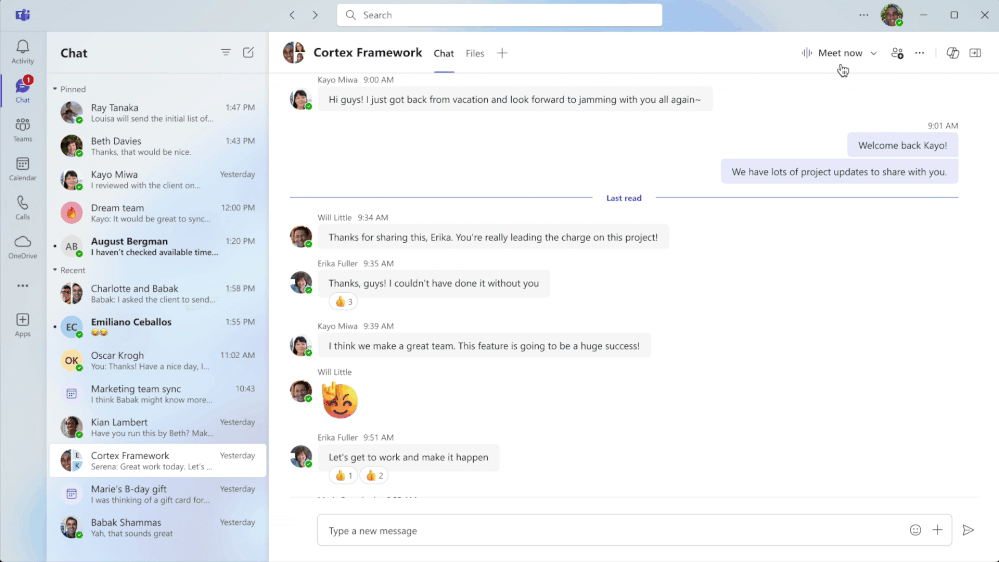 Meet now in Teams group chat
Meet now in Teams group chat
Copilot in Teams compose enhancements
Copilot in Teams can help transform your ideas into clear chat messages and channels posts. Just type a few words or sentences and Copilot will draft a message for you. You can also ask Copilot to customize a message by using your own prompt, like “make it shorter” or “add a call to action.” This capability will be available this spring and will require a Copilot for Microsoft 365 license.
Microsoft 365 Business Standard and Microsoft 365 Business Premium customers can enhance their Teams experience with all these new features and be ready for the new Copilot capabilities as they’re released. Just add Teams Premium, Copilot for Microsoft 3651 , and Teams Phone to your subscription. If you do not already have these core productivity offerings, you can purchase them now and then add Copilot for Microsoft 365 to your subscription.
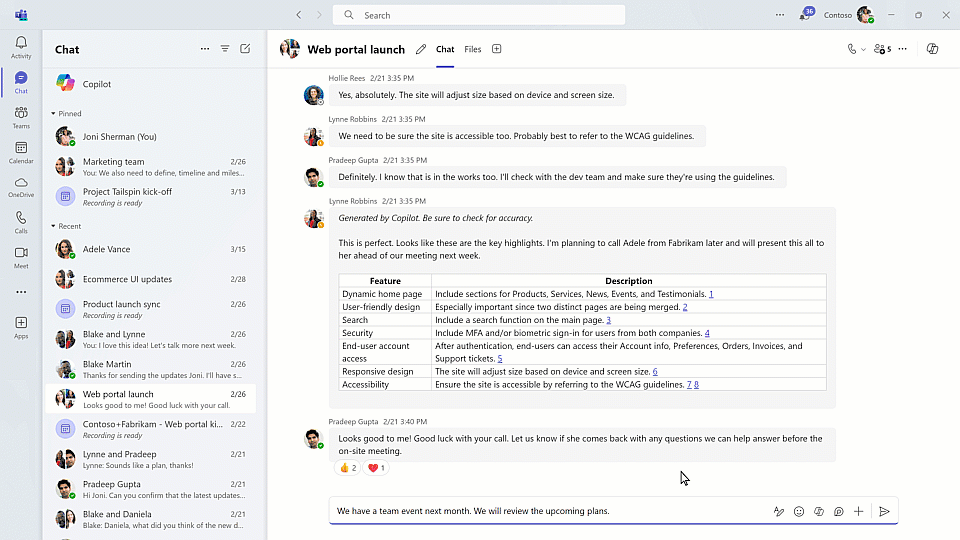 Copilot in Teams compose enhancements
Copilot in Teams compose enhancements
Resources
- Copilot for Microsoft 365 may not be available for all markets and languages. To purchase, enterprise customers must have a license for Microsoft 365 E3 or E5 or Office 365 E3 or E5, and business customers must have a license for Microsoft 365 Business Standard or Business Premium, or a version of these suites that no longer includes Microsoft Teams.

by Contributed | Mar 28, 2024 | Technology
This article is contributed. See the original author and article here.

We are excited to announce the addition of ransomware detection and recovery, an expanded Personal Vault, password protected and expiring sharing links, and offline files and folders to Microsoft 365 Basic. These features are available today, at no additional charge, for all our Microsoft 365 Basic customers, and they complement the 100GB of cloud storage, ad-free Outlook email, and advanced email security features already included.
With additional security features from OneDrive, Microsoft 365 Basic subscribers will get additional peace of mind for their files and photos, at the same low price.
Let’s take a look at the newly added features and some helpful tips to get you started.
Ransomware detection and recovery
How it helps: By storing your important files and photos in OneDrive, you’re not just backing them up in the cloud; OneDrive vigilantly monitors them for signs of ransomware.
How it works: Our system monitors your account for signs of ransomware activity. This includes unusual file modifications, encryption actions, and other indicators of malicious intent.
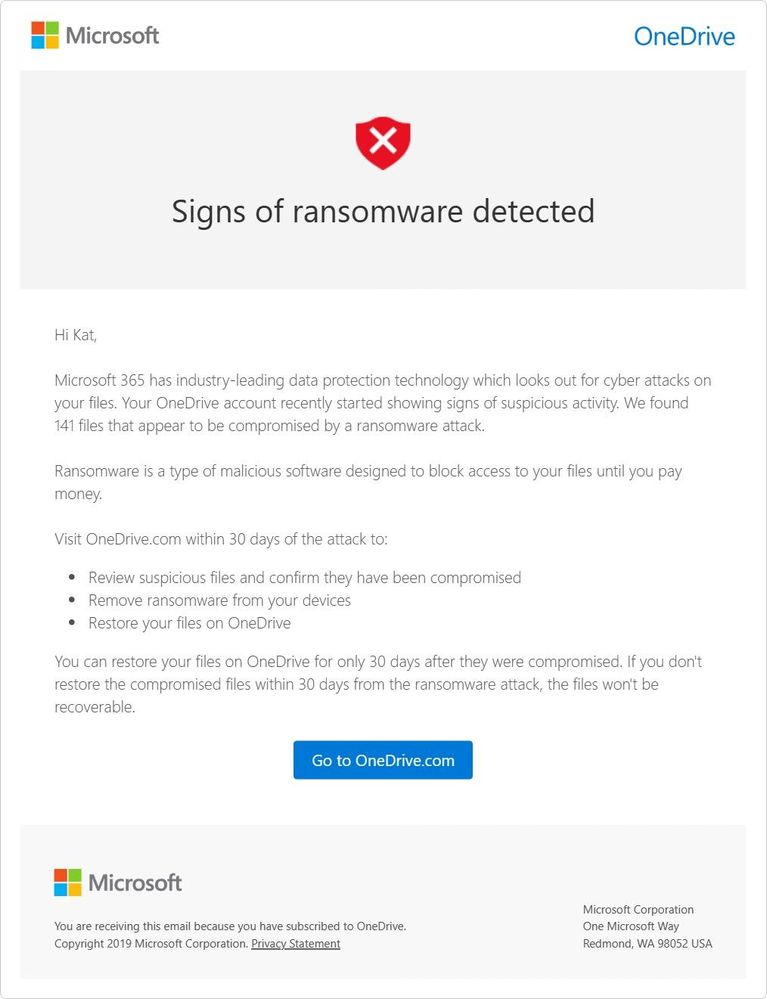
OneDrive alerts you to ransomware on your device and via email.
When Microsoft 365 detects a ransomware attack, you’ll receive a notification on your device and an email from Microsoft, alerting you to the potential threat. We guide you through the process of assessing the extent of the issue, deleting suspicious files and then help you identify a safe point in time for restoration.
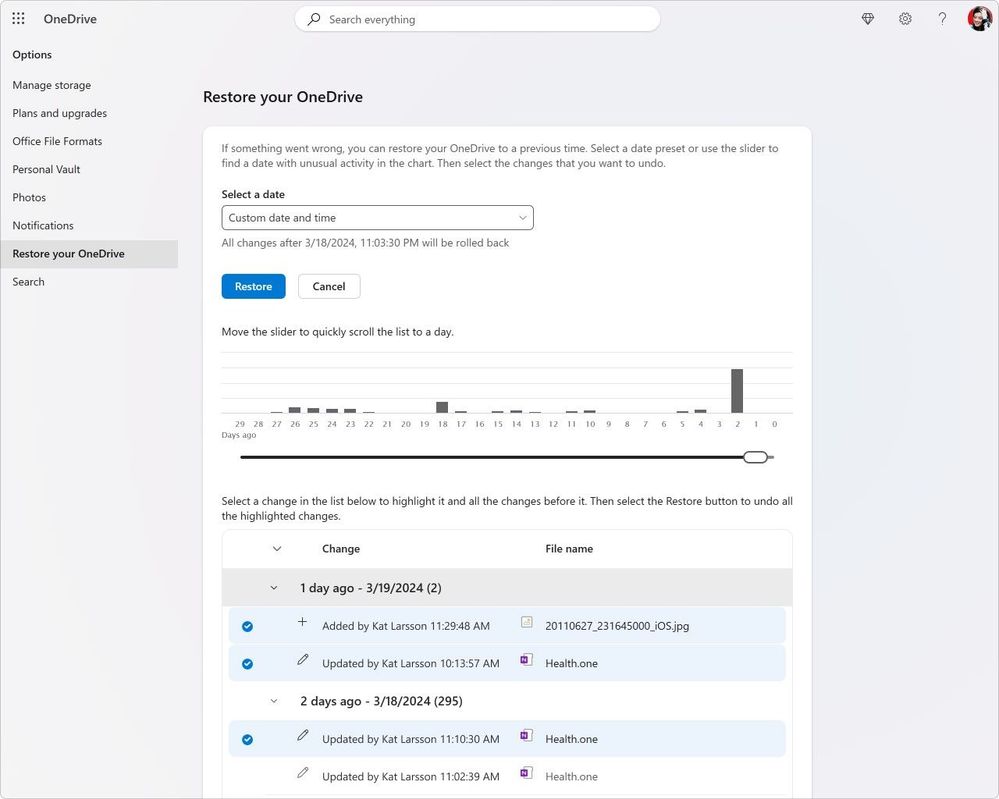
Choose the date and time to restore your OneDrive.
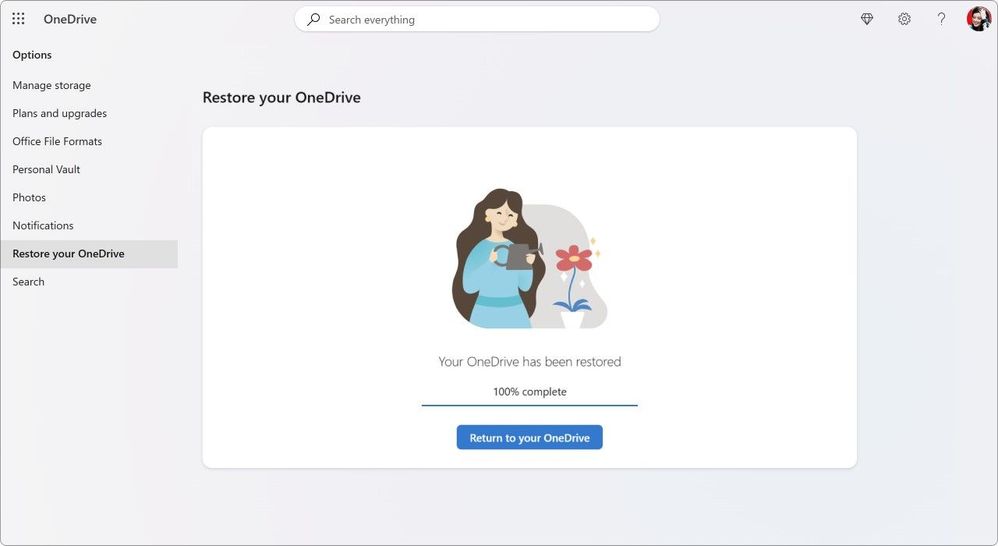
OneDrive will update you when the restoration completes.
While there’s a possibility of losing some data between the time of infection and detection, this measure mitigates the loss, safeguarding your most crucial files and memories. Check out this article for more detailed information on recovering your OneDrive.
Personal Vault
How it helps: Personal Vault in OneDrive provides an extra layer of security with Two-Factor Authentication (2FA), helping to ensure that only you can access your critical files. This feature is invaluable for important documents, such as passports, tax records, and financial documents, as well as any photos or digital keepsakes you hold dear. Microsoft 365 Basic subscribers previously could only store 3 files in their Personal Vault. That restriction has now been removed, and subscribers can put as many files as they want in Personal Vault up to their 100GB storage limit.
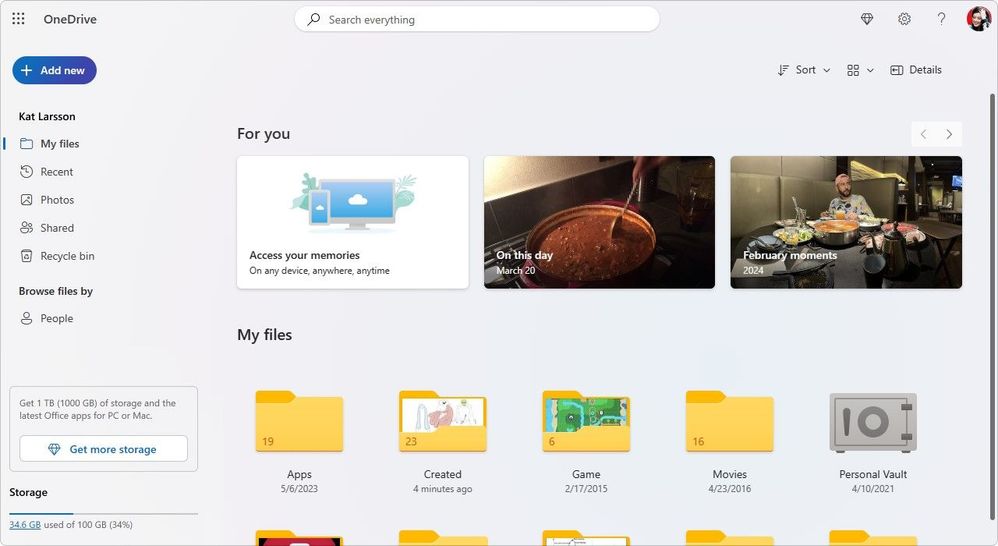
Personal Vault is accessible on any device via OneDrive.
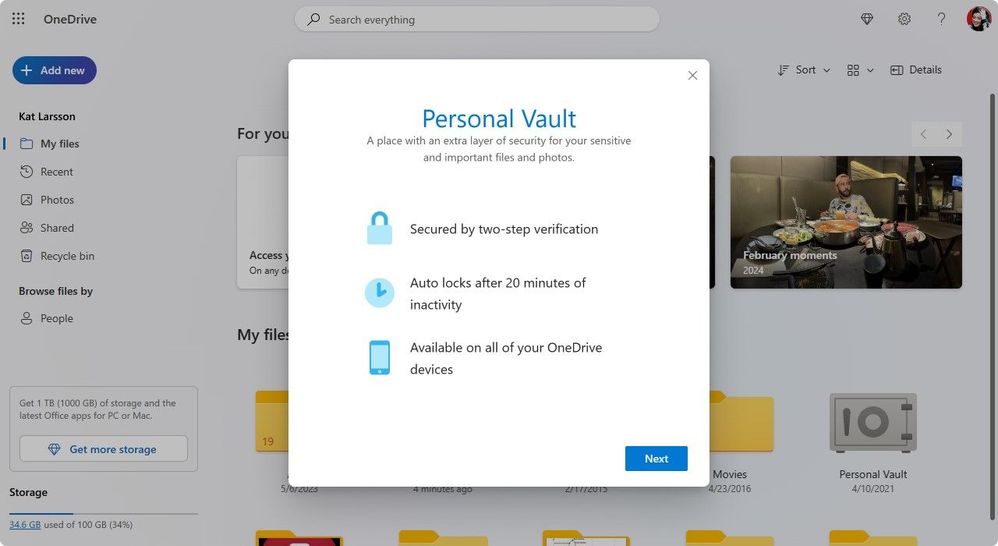
Your files will be secured by identity verification, yet easily accessible across your devices.
How it works: Activating your Personal Vault is straightforward and requires just a few steps:
1. Start by Logging In: Navigate to OneDrive.com and sign in with your Microsoft credentials.
2. Enable Personal Vault: Head over to Settings and find the Personal Vault option. Click “Enable” to begin the setup.
3. Choose Two-Factor Authentication (2FA): For enhanced security, enabling your Personal Vault requires 2FA. You can opt to use a secondary email or, for optimal security, use the Microsoft Authenticator app available on both iOS and Android platforms.
4. Enter Your PIN: Upon setup, you’ll receive a PIN through your chosen 2FA method. Enter this PIN to activate your Personal Vault.
Every time you access your Personal Vault, you’ll be prompted to authenticate via your selected 2FA method, ensuring that only you can view and edit your most sensitive files.

You can sign in to Personal Vault via the Microsoft Authenticator app.
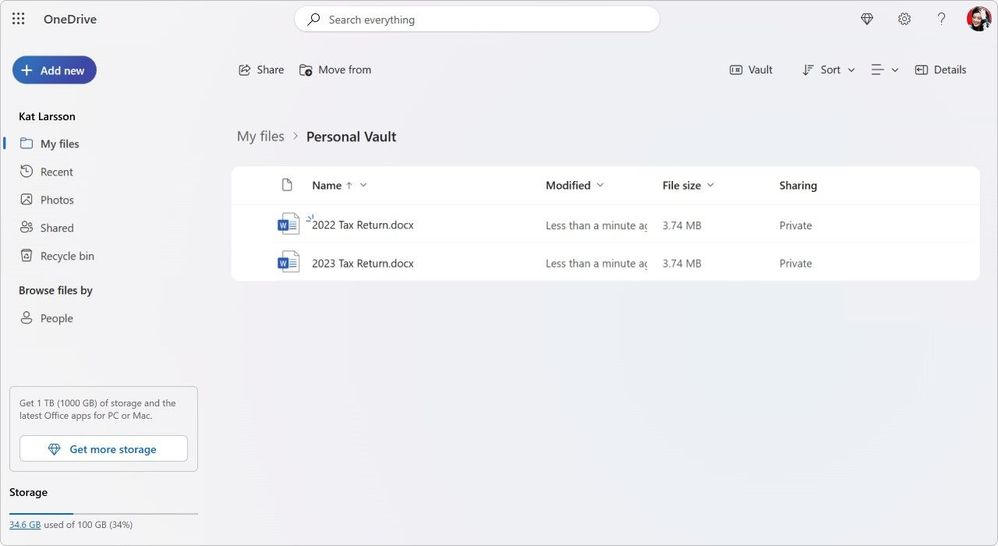
Store important files in your Personal Vault.
Personal Vault: Tips
• Regularly Review Your Vault: Periodically assess the files in your Vault to ensure that everything stored there is still relevant and requires the extra layer of security.
• Securely Close Your Vault: While your Personal Vault will close automatically after 20 min on inactivity, it’s a smart move to just close Personal Vault after you’re done. This simple habit ensures that your sensitive files remain locked away, even if you forget to close your browser.
To learn more about your Personal Vault, please read this support article.
Password protected and expiring sharing links
How it helps: Sharing files and photos is a necessity- whether it’s for collaboration, sharing and connecting over memories, or distributing important documents. Now Microsoft 365 Basic subscribers gain access to advanced sharing options, allowing for more secure and controlled sharing experiences. These new features are great for community and group projects, family memories, and sensitive documents.

Choose the date for sharing links to expire.
How it works: Simply log into OneDrive wherever you want to share from (on the web, a PC, or mobile device) and you can manage how you are sharing any file or folder.
1. Initiate Sharing: Click on the sharing control for your desired file or folder to open the Sharing dialog.
2. Access Advanced Sharing Options: Select the edit drop down control and then select “Sharing settings.”
3. Set Expiration Dates: Choose the Expiration option to specify a date when the link will expire, rendering the file or folder inaccessible to recipients.
4. Create a Secure Password: Use the Password option to assign a unique password that recipients must enter to access the shared file or folder. Remember to communicate this password to your intended recipients separately.
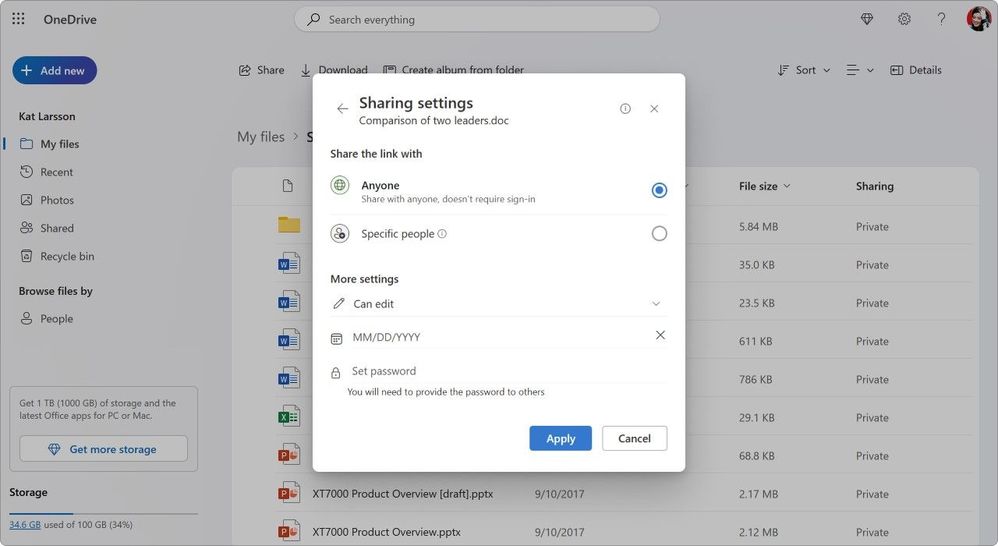
Easily manage all your sharing settings in one place.
Sharing: Tips
It’s always good to stay on top of the content you’ve shared with friends, family, and collaborators. OneDrive gives you an easy way to do so. Simply log into your account at OneDrive.com, and on the left-side navigation, you’ll see a view called “Shared.” The Shared view, lets you quickly see all the content that’s share with you and more importantly, all the content that you’ve shared with others.
From this view, simply click on the sharing control to once again bring up the Sharing dialog. At the bottom of the dialog, you can see which individuals have access to this content. Clicking on those names will open the advanced controls, letting you update permissions if you desire.
For more information on sharing files and folders please read this support article.
Offline Files and Folders on OneDrive Mobile
How it helps: Sometimes the real world doesn’t give you the best access to the digital world with spotty or non-existent connectivity. But you may need access to your files when you don’t have a connection. Offline Files and Folders, empowers Microsoft 365 Basic customers with seamless access to your files on the go, whether you’re traveling, in a location with poor connectivity, or simply want to save on data.
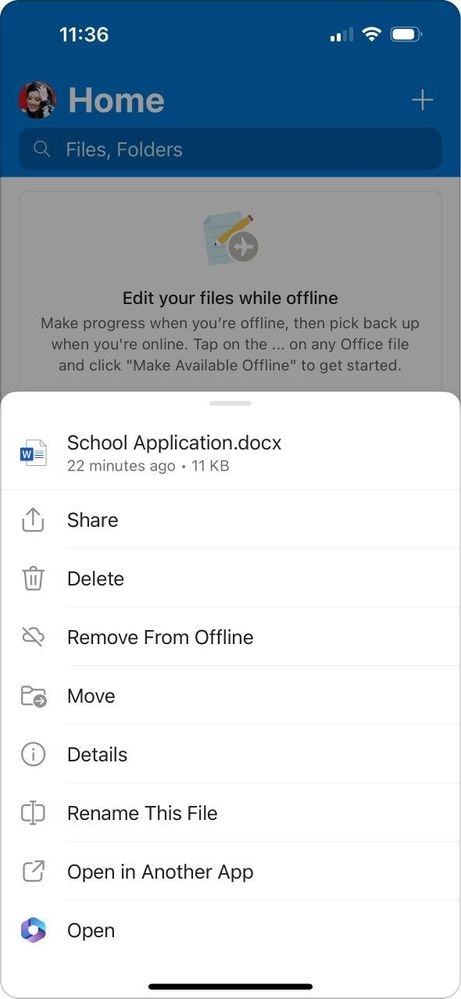
Choose which files to make available offline.
How it works: To access this feature on your mobile device, make sure you have the latest version of the OneDrive app installed on your Android or iOS device. Even without an internet connection, you can open and edit files stored offline in the app.
1. Select Your Files or Folders: Browse your files in the app, and for any file or folder you wish to access offline, open the context menu by tapping the three dots next to the item.
2. Enable Offline Access: Choose the “Make Available Offline” option. You’ll see a blue sync icon appear, indicating the file is syncing. Once the icon turns grey, your file is available for offline use.
3. Automatic Sync: As soon as you reconnect to the internet, any changes you made to offline files are automatically synchronized with your OneDrive, ensuring your work is always up to date.
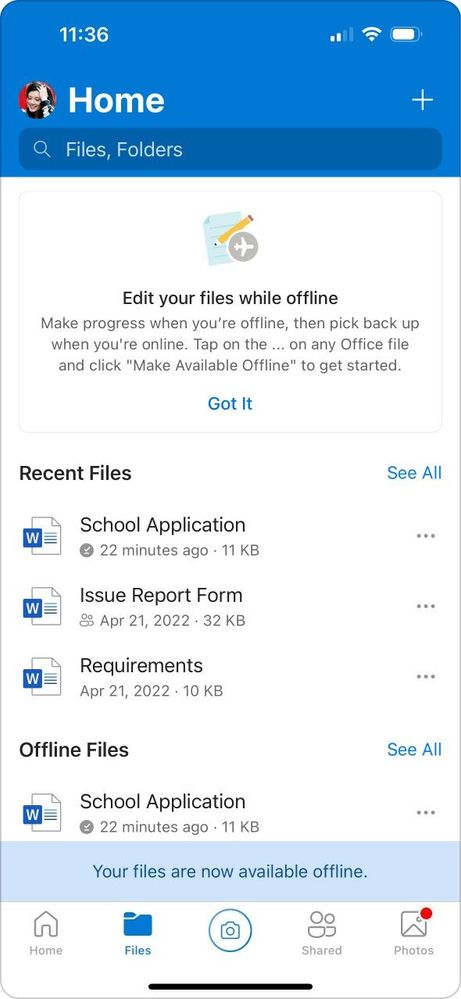
OneDrive will confirm your files are available offline.
Offline Access: Tips
• Plan Ahead: Before traveling or entering areas with poor connectivity, preemptively select important documents for offline access.
• Storage Considerations: The number and size of files you can store offline are limited by your device’s available storage and the Microsoft Basic 100GB storage limit. Keep an eye on your device’s capacity to ensure optimal performance.
• Data Management and Usage: Be mindful of your data plan when enabling offline access for large files or folders, especially if relying on cellular data. Syncing large files or numerous folders can consume significant amounts of your data plan. To avoid unexpected data usage, consider syncing over Wi-Fi or adjusting your sync settings.
• Manage Storage: Regularly review and remove offline files you no longer need to free up storage on your mobile device.
For more information, please read these articles for Offline Files and Folders for Android and iOS.
Wrapping Up
Whether you’re safeguarding your family photos, managing your personal projects, or simply enjoying the ease of accessing your files anywhere, anytime, Microsoft 365 Basic is evolving with you, helping ensure that your digital life is secure, private, and seamlessly connected. We appreciate you, our Microsoft 365 Basic subscribers, and we are excited to continue making your experience better.
Thank you for entrusting us with your most precious digital assets and thank you for reading.
About the Author
Arvind Mishra is a Principal Product Manager on the OneDrive Consumer Growth team. He rejoined Microsoft in 2021, after more than a decade away, and is focused on building experiences for OneDrive’s consumer audience. Arvind is based in Los Angeles, and in his spare time, he can be found spending time with his family, snowboarding, scuba diving, or trying to progress to the next level in Duolingo (the Barbie movie got this so right).
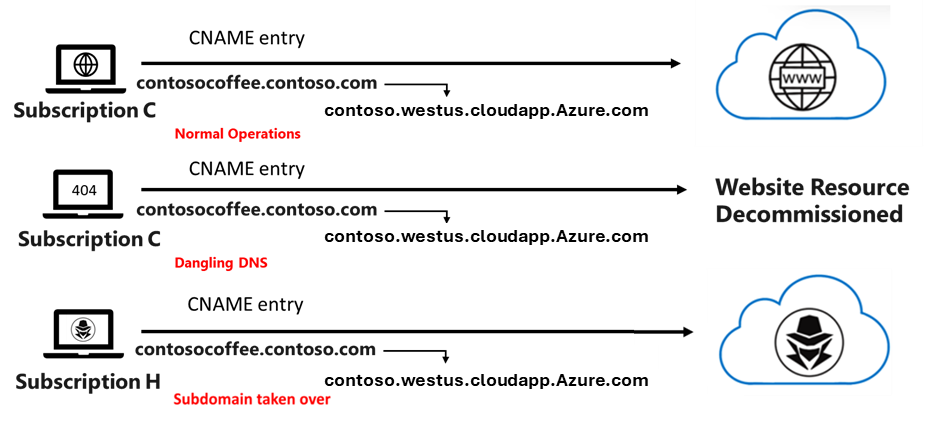
by Contributed | Mar 27, 2024 | Technology
This article is contributed. See the original author and article here.
The reuse of DNS names is a common requirement for cloud customers, as applications and services may need to be upgraded or migrated while still having the ability to deploy using the same DNS name as a pointer. The danger of this practice is that it can leave you vulnerable to a security threat known as a subdomain takeover. This can happen when a DNS name record does not point to a provisioned Azure resource, which means any domain associated with the DNS entry is now considered “dangling”. A malicious actor could take control of the dangling domain by creating a new resource with the same DNS name that points to different resources as shown below:

In the past, Azure has recommended multiple ways to remediate this type of threat by using products like Microsoft Defender for App service or Azure DNS alias records, along with practicing “good DNS hygiene”. Today, we are excited to announce a new capability for Azure public IP address that can prevent this type of subdomain takeover while still allowing for re-use of DNS names. We have introduced a new parameter called Domain Name Label Scope will have an additional, hashed string in between the domainnamelabel and location fields.
The value of the Domain Name Label Scope can be set to four different values:
Value
|
Behavior
|
TenantReuse
|
Object with the same name in the same tenant will receive the same Domain Label
|
SubscriptionReuse
|
Object with the same name in the same subscription will receive the same Domain Label
|
ResourceGroupReuse
|
Object with the same name in the same Resource Group will receive the same Domain Label
|
NoReuse
|
Object with the same name will receive a new Domain Label for each new instance
|
Let’s say you have a single Azure subscription and want to create a website for your Contoso Coffee business while preventing others from reusing your DNS name records. You would:
- Select SubscriptionReuse as the option when deploying a public IP address with DNS, generating a domain name label of contoso.fjdng2acavhkevd8.westus.cloudapp.Azure.com
- Create a DNS zone for your domain name in Azure DNS for contoso.com and then assign a CNAME (canonical name) record in your DNS zone with the subdomain contosocofee.contoso.com that points to your domain name
- Delegate your domain name to the Azure DNS name servers at your domain name registrar
Note the second and third steps could be done at any DNS provider, inclusive of Azure DNS.
If you delete and redeploy a public IP address using the same template as before, the domain name label will remain the same. However, if another customer deploys a public IP address using this same template under a different subscription, the provided domain name label will change (e.g. contoso.c9ghbqhhbxevhzg9.westus.cloudapp.Azure.com), even if the public IP resource with the domain name above was removed. This would prevent any other subscription from being able to takeover the subdomain.
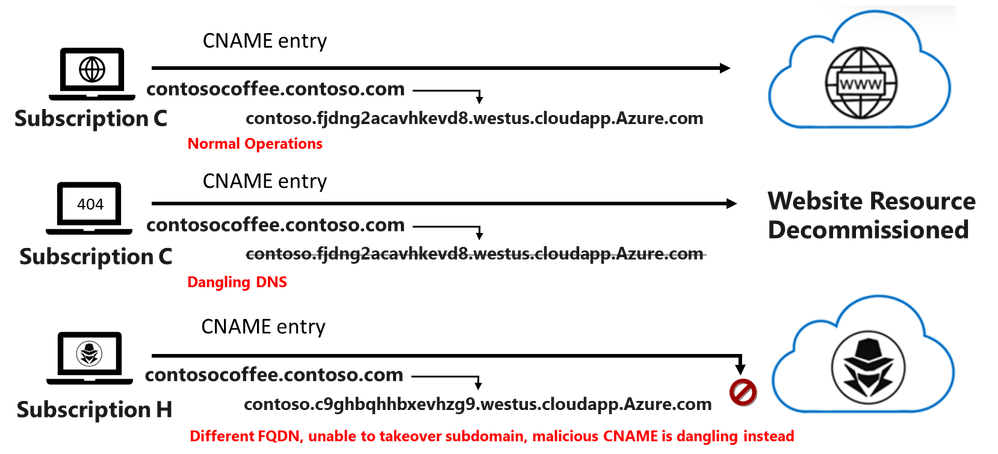
The feature to secure your domain name label records using Domain Name Label Scope is available in all regions. For more information on Azure DNS or Azure Public IP Services, you can review the documentation below.
Azure DNS documentation | Microsoft Learn
Azure Virtual Network IP Services Documentation | Microsoft Learn


Recent Comments